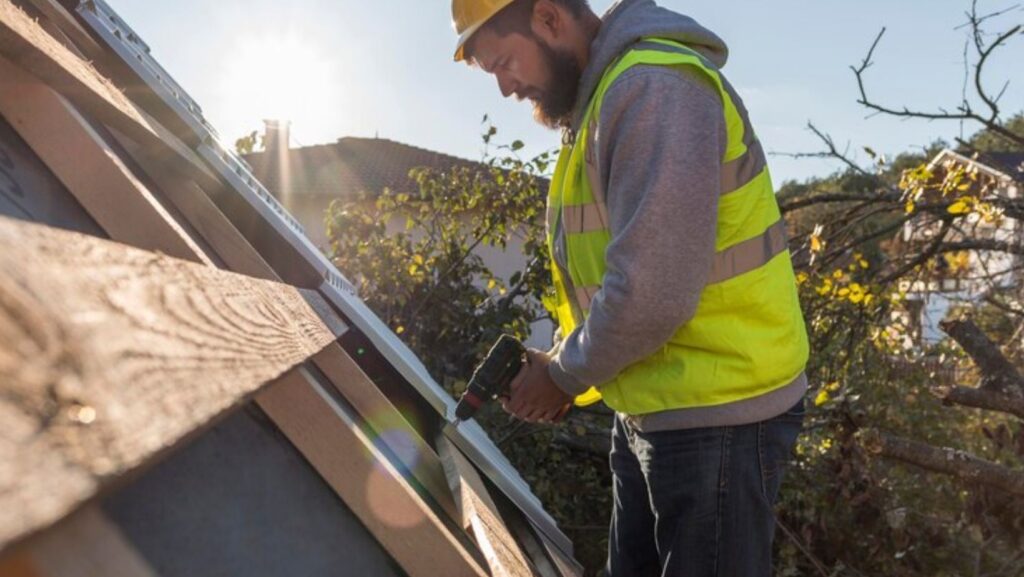Metal roofing is known for its durability and long lifespan, making it a popular choice among homeowners. However, just like any other roofing material, it is not impervious to wear and tear over time. If you wonder about the signs and the best timing for replacing your metal roof, you’re not alone. Understanding these factors can help you make informed decisions about your roofing needs and ensure greater protection for your home.
Understanding the Lifespan of Metal Roofs
Metal roofs are generally touted for their longevity, with many products lasting anywhere from 40 to 70 years, depending on the type of metal and the installation quality. Steel, aluminum, and copper are among the most popular materials used for metal roofing. Each of these materials has unique characteristics that contribute to its overall lifespan.
For instance, galvanized steel roofs can last up to 50 years when they are properly installed and maintained. On the other hand, aluminum roofs are less prone to corrosion but typically last around 40 years. Despite their durability, all roofs require periodic inspections to identify potential problems.
Signs Your Metal Roof Needs Replacement
Identifying the right time to replace your metal roof can be challenging. Several factors indicate that it may be time for an upgrade. One of the most common signs is the formation of rust. When metal roofs develop rust spots, it can lead to significant degradation over time. Additionally, if you notice leaks inside your home or peeling paint, it may point to underlying issues with your roof.
Another telltale sign is excessive corrosion or denting, which can compromise the structural integrity of your roof. Inspecting for loose or missing fasteners and examining the seams and ridges for cracks are important steps in determining the condition of your roof.
Age and Material As a Consideration
The age of your roof plays a significant role in your decision to replace it. If your metal roof is approaching or has surpassed its expected lifespan, it is wise to consider replacement. Depending on the material, some roofs may require more immediate attention than others. In cases where a roof lasts several decades, it becomes vital to evaluate its structural integrity.

Innovation is also vital when considering a replacement. New and improved materials now available on the market may offer greater energy efficiency and enhanced performance compared to older models. There are metal roofing alternatives if you’re looking for replacement options. Additionally, the design of metal roofing has evolved to ensure better quality and performance. If your current roof lacks effective water runoff features, or if it has not been updated for advanced weather resistance, it may be time to consider an upgrade.
Climate and Environmental Factors
Local weather patterns should not be overlooked when assessing the state of your metal roof. Areas that experience heavy snowfall, extreme heat, or frequent storms can exacerbate roofing wear and tear. For example, constant high temperatures can lead to expansion and contraction, which can eventually break down the metal and intricate roof designs.
Persistent moisture also plays a role, especially if your location has a high humidity level. Moisture trapped under the roof may lead to rust formation, further diminishing its lifespan. Ensuring that your roof remains protected from environmental elements is key to longevity.
Cost Considerations for Replacement
Financial constraints often play a role in the decision to replace a metal roof. Structural issues might not present immediate symptoms, leading some homeowners to delay necessary upgrades. Getting an estimate from a professional can help you understand the potential costs and benefits of long-lasting metal roofing options, allowing you to make an informed decision based on your budget and needs. It’s essential to look at replacement as an investment rather than just a cost.
The long-term benefits of a new roof far outweigh the initial expense. For instance, while the upfront cost may be higher, modern metal roofs are often more energy-efficient, resulting in lower utility bills over time. Additionally, they typically require less maintenance, further reducing long-term costs.
Choosing the Right Time for Replacement
Timing is a critical aspect when considering a roof replacement. Spring and early fall tend to be the most favorable times to conduct roof work due to milder weather conditions. A clear weather window allows for uninterrupted work and can contribute to better-quality installations.

However, you may encounter better pricing during the off-peak winter months. While this may involve the risk of weather interruptions, affordability could make it worth considering.
Finding Reliable Contractors
Once you decide it’s time to replace your metal roof, carefully selecting a contractor should be your next step. Research local companies that specialize in metal roofing installations and check their reviews for reliability and quality of work. Requesting multiple quotes can also help you compare pricing while ensuring that you are making a well-informed decision.
Be sure to verify their qualifications and ask about their warranty options, as these can vary significantly between contractors. A reputable contractor will not only install the roof properly but will also guide the process.
Regular Maintenance: A Key to Longevity
After installing a new metal roof, regular maintenance is critical to maximize its lifespan. Simple tasks such as cleaning gutters, removing debris, and inspecting for signs of wear will go a long way in maintaining integrity. Addressing minor issues early on can prevent larger problems down the line, translating to significant savings.
Schedule routine inspections with a professional roofing contractor to ensure that minor repairs are conducted promptly. With proper care and timely interventions, many roofs can stay in good condition well beyond their initial life expectancy.
Deciding when to replace your metal roof involves various factors, including age, environmental influences, visible deterioration, and advancements in roofing technology. By understanding these elements and acting accordingly, you can safeguard your home against potential roofing failures and ensure long-lasting protection.


More Stories
Why You Should Invest In Professional Scaffolding Services?
Maximizing Space and Functionality: The Ultimate Guide to Garage Building
The Importance of Quality Siding in MA